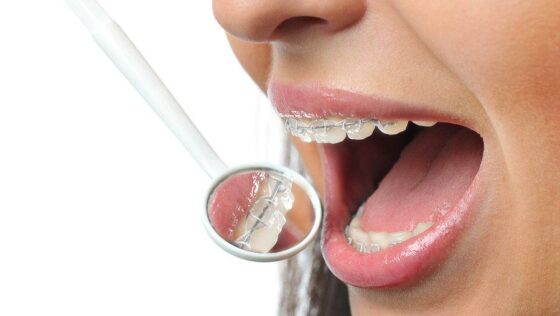The Best Guide To Legacy Orthodontics
The Best Guide To Legacy Orthodontics
Blog Article
Everything about Legacy Orthodontics
Table of ContentsLittle Known Questions About Legacy Orthodontics.The Best Guide To Legacy OrthodonticsHow Legacy Orthodontics can Save You Time, Stress, and Money.8 Easy Facts About Legacy Orthodontics ShownNot known Factual Statements About Legacy Orthodontics
In addition, we provide flexible therapy routines, flexible settlement choices and an enjoyable, satisfying experience.An orthodontist is a dental practitioner trained to diagnose, stop, and treat teeth and jaw abnormalities. They fix existing problems and are educated to determine problems that might create in the future. Orthodontists collaborate with people of all ages, from children to adults. People typically associate an ideal smile with health.
Malocclusion, or misaligned teeth, can lead to oral concerns, consisting of tooth degeneration, gum condition, and challenging or painful chewing. However not every person is born with straight teeth. If you have a bad bite or big rooms between your teeth, you may intend to get in touch with a dental practitioner focusing on orthodontic treatment.
Legacy Orthodontics Fundamentals Explained
( Image Debt: DigitalVision/Getty Images) Orthodontists use fixed and removable oral tools, like dental braces, retainers, and bands, to alter the setting of teeth in your mouth. Orthodontic therapy is for dental problems, including: Crooked teethBite troubles, like an overbite or an underbiteCrowded teeth or teeth that are as well much apartJaw misalignmentThe goal of orthodontic treatment is to enhance your bite.
A healthy and balanced bite guarantees you can consume, eat, and speak properly. While you might think of orthodontists as primarily for children or teens that need braces, they can correct oral problems at any age. Orthodontists go to college, oral school, and orthodontic institution. After graduation, they spend 2 or 3 years in an orthodontic residency program.
, however not all dentists are orthodontists. They concentrate on two locations: How to effectively and securely relocate teeth Exactly how to appropriately guide growth in the teeth, jaw, and faceOnce an orthodontist has actually finished training, they have the alternative to become board licensed.
What Does Legacy Orthodontics Do?
Malocclusion leads to tooth overcrowding, an askew jaw, or uneven bite patterns. Malocclusion is typically treated with: Your orthodontist affixes metal, ceramic, or plastic square bonds to your teeth.
If you have just small malocclusion, you may have the ability to make use of clear dental braces, called aligners, as opposed to typical dental braces (https://www.metal-archives.com/users/legacyortho). Some people need a headwear to assist relocate teeth right into line with stress from outside the mouth. After dental braces or aligners, you'll require to use a retainer. A retainer is a custom gadget that maintains your teeth in location.
They can produce additional room in the mouth without having to draw teeth. Orthodontists make use of wires, surgical screws, or plates to support your jaw bone.
You might need to see an orthodontist if you have: Crowding or not adequate room for all of your teethOverbite, when your upper teeth come by your base teethUnderbite, when your base teeth are as well much forwardSpacing or concerns with gapsCrossbite, which is when your top teeth fit behind link your bottom teeth when your mouth is closedOpen bite or a vertical space in between your front bottom and upper teethMisplaced midline, when the center of your bottom and upper teeth don't line up Fixing a dental malocclusion can: Make biting, chewing, and speaking easierImprove the proportion of our face and your total appearanceEase pain from temporomandibular joint conditionsDifferent your teeth and make them easier to clean up, assisting avoid dental cavity or cavities It's frequently a dentist that initially notices misaligned teeth during a regular exam.
Getting My Legacy Orthodontics To Work

During your initial orthodontic assessment, you'll likely have: A dental examPhotos taken of your face and smileDental X-raysPanoramic (360 level) X-rays of your face and headImpressions to develop molds of your teethThese tests will certainly aid your orthodontist recognize just how to continue with your treatment. orthodontist. An orthodontist is a dentist that's had training to treat your teeth and jaw
Orthodontists might do surgical procedure, exams,X-rays,and more to help you acquire an extra comfortable, healthier smile. An orthodontist is concentrated on your bite, so something like a cracked tooth would be dealt with by a dental professional. Orthodontists are dental professionals but not all dentists are orthodontists. Orthodontists are concentrated on your bite, or the method your teeth meshed, and the straightness of your teeth.
Ever asked yourself exactly how stars always appear to have perfectly straightened teeth? The solution commonly depends on the skilled hands of an orthodontist. However exactly what does an orthodontist do? Orthodontists are oral experts that concentrate on fixing irregularities in the teeth and jaws. Their know-how surpasses just developing a lovely smile; it reaches enhancing your overall oral wellness and function.
How Legacy Orthodontics can Save You Time, Stress, and Money.

While dental braces are the most commonly recognized orthodontic treatment, orthodontists have a varied toolkit at their disposal. The details technique chosen relies on the severity of the case, the client's age, and specific choices. These tried-and-true dental braces make use of a system of brackets adhered to the teeth and attached by cords.
Clear aligners, like Invisalign, are a prominent alternative for patients looking for a much more very discreet therapy choice. These removable trays are customized to gradually move the teeth's placement. Headgear may be made use of combined with braces or aligners to apply additional targeted pressures, specifically for fixing jaw inconsistencies. In instances of slim jaws, palatal expanders can be made use of to create room for appropriate tooth alignment.
Report this page